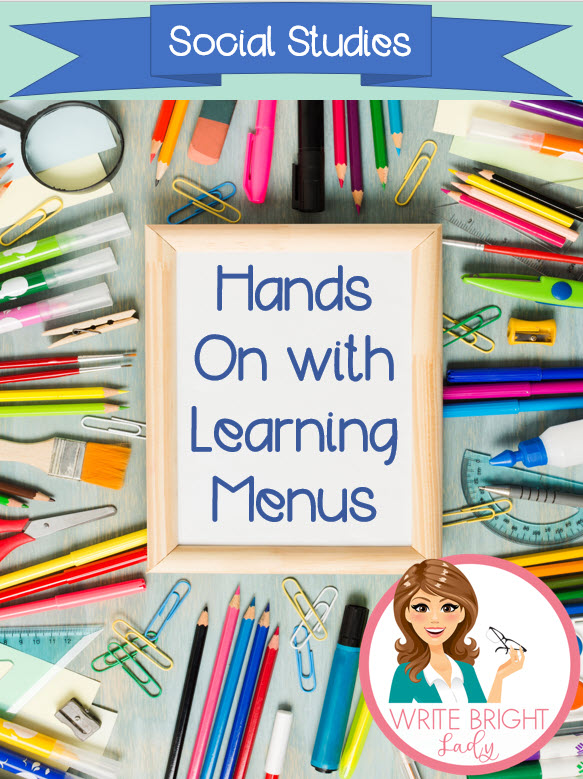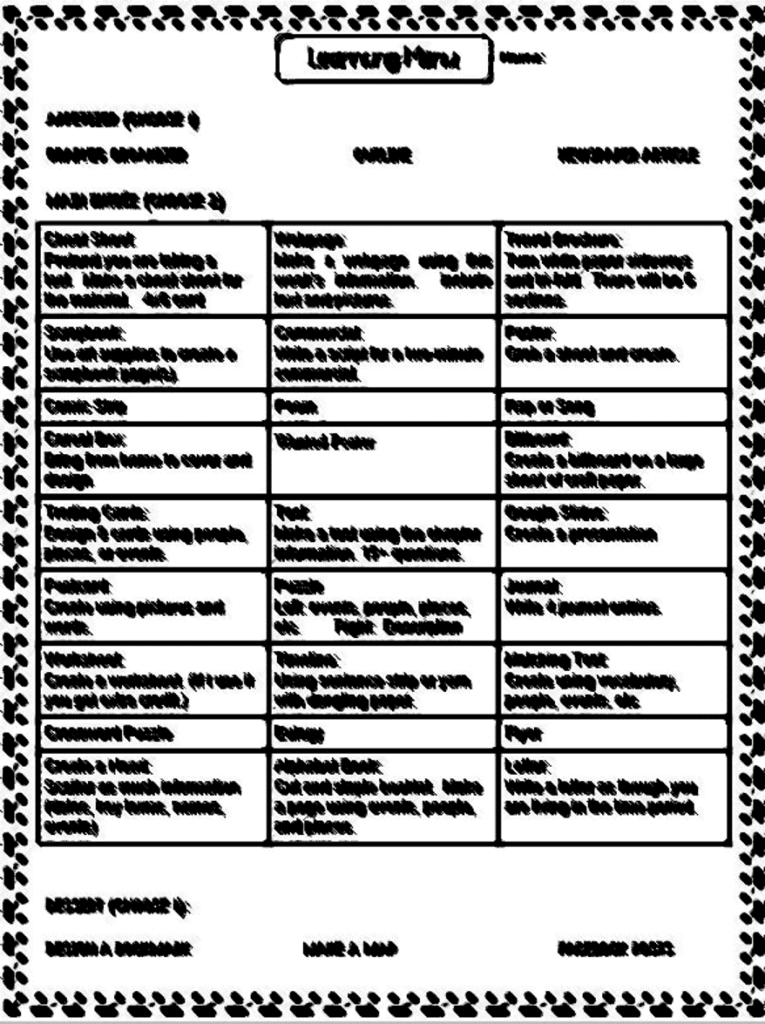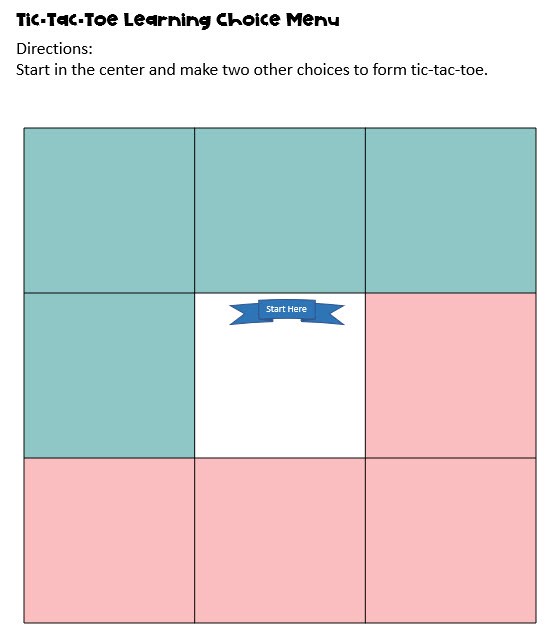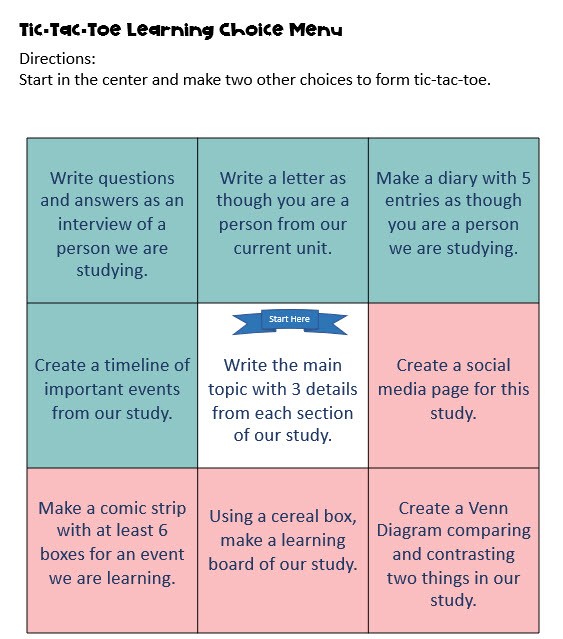Learning Choice Boards in Social Studies
Who said teaching and learning history had to be boring? Learning choice boards aka learning menus transform history lessons into hands-on social studies experiences that are fun and engaging. Learning choice boards or learning menus allow students to interact with the material, remember information, experience differentiated learning, and make it possible for concepts to stick. Through learning choice boards or learning menus students play an active role in their learning.

Learning menus are structured like a dinner menu: appetizer, entrée, and dessert. Within each course, students are able to choose from an assortment of activities. As each course is completed, teachers can assess the results before students move on to the next course. Not only do students feel in control through having a choice, but it naturally allows for differentiated learning. It almost seems too good to be true. They can be used all year, allow for student-centered learning, increase student engagement, and provide a valuable learning experience. Talk about a win-win.

You can use a standard learning menu, as the one shown here (blurred to protect the information). This learning menu can be applied to any unit of study. Many teachers use the same one all year. What does this look like in a classroom? It looks like students are busy learning. When an observer walks in your classroom, they will see students scattered all over the room. Some are cutting things out, others are researching, and many are writing. You will need supply stations set up around the room for the different choices on the board. Students will move about according to what they are working on. The best part, active learning is taking place. There is no need for you to stand at the front of the room and lecture. Students are learning the material on their own as they have hands-on interaction with the material.

Learning choices on the menus are targeted toward learning goals. The teacher is able to direct the menu process, but the student has control over the options. Continual assessment and teacher feedback ensures that students are making progress toward the learning goals. You don’t want students sitting reading a textbook. You want them to dig into the material and engage with it. This is when true learning takes place. Taking the content and using it to make a product builds historical knowledge and helps students retain the information.

Let’s allow students to control their own learning. They are not only learning the material, but you are teaching them decision making skills and building confidence. Give learning ownership back to students. Organize your classroom into different stations. Students can choose the stations that interest them. Allowing students to work at their own pace, increases learning time. Classmates are no longer waiting for others to finish, but rather they can move on to the next activity. Empower students through choice while still meeting required learning goals.
